Hallgrímur Helgason
"Icelandic paper is in some cases not completely worthless" says author Hallgrímur Helgason. His latest novel, The Hitman's Guide to House Cleaning, has just been published in German translation.
Sagenhaftes-Island/Fabulous Iceland had a few words with Hallgrímur Helgason about writing, the recession, and the going rate for Icelandic paper, before he set off for Germany on a reading tour. His latest novel, 10 ráð til að hætta að drepa fólk og byrja að vaska upp/The Hitman's Guide to House Cleaning, has just been published in German translation by the Klett Cotta publishing house in Stuttgart.
HH E-mail (regards to Grim), 24 February 2010, 20:38
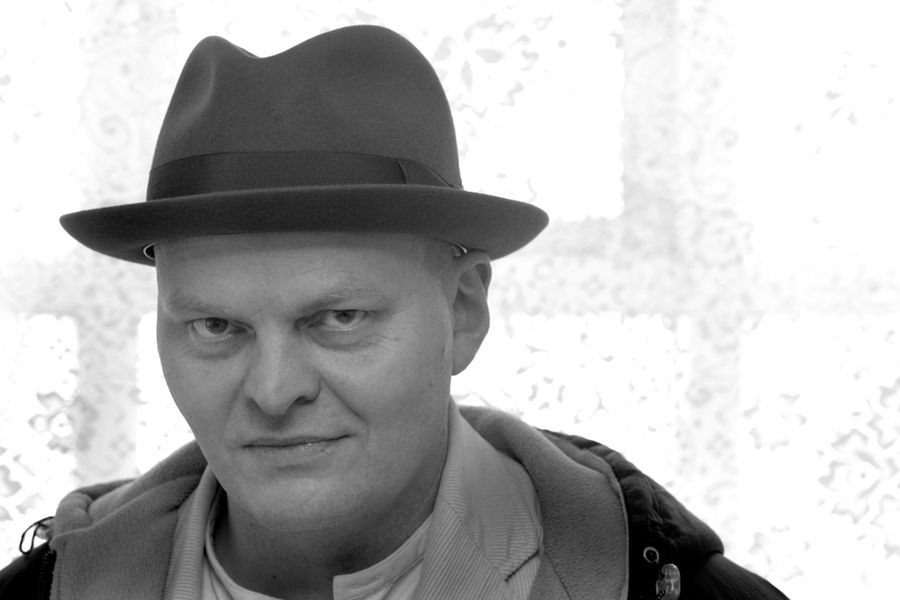 Hello, Hallgrímur:
Hello, Hallgrímur:
(Hallgrímur Helgason. Rather an ordinary Icelandic name, really; there are probably about fifty people with that name in the phone book.) Helgason recalls the story of when the names of eleven Icelandic footballers were announced on the public address system at a European club match, the commentator added, after reading out all the patronymics, that it was remarkable to see a team comprising eleven brothers.
Yes, but it's my first name that has often proved a conundrum to foreigners, especially in America, where I got called Hal Cream, Al Green or Hulk Reemer.
“Have you given up visual art for good?” I asked you at a Reykjavík bar last winter. I don't remember what you said, but for the time being writing is occupying most of your time. You've just come home, if Iceland can still be called home… more the end of the world, or the periphery of civilisation. You were in Germany: and where exactly, if I may ask?
I popped over to Hamburg to read at the Literaturhaus. It's always good to visit there –the hall has a nice ambiance, and it's a beautiful building – and the Director, Dr. Rainer Moritz, is a great and cheery bookman. A nice mixture of a highly-cultured intellectual who knows Proust back to front, and a man with joie de vivre who knows every Eurovision song ever sung. I'm off again on 7 March to read in Köln (8.3), Salzburg (9.3), Stuttgart (10.3) and Gschwend (11.3), which is a little village in Schwaben with great cultural ambitions.
You really have three lives: writing, visual art; and then good old Grim is a different thing entirely. Grim has got into book form, in Best of Grim (2004), where text and drawings work together. Iceland has been in a semi-apocalyptic state since October 2008, and probably longer if one cares to think about it. Are you working within this crazy recession in any of your fields of expression: writing, painting - or composing your own Grim's Tales?
Yes, it sounds complicated, but in fact it's even more complicated than that, because my writing comprises novels, poetry, plays, screenplays, and press articles. The visual art comprises paintings, drawings, and most recently photographs.
Grim, on the other hand, probably has a more-or-less unsplit personality What I've done with the recession is hold an exhibition: A Expansão islandesas 2009 – The Icelandic Expansion 2009, in Reykjavík in October 2009, on the first anniversary of the meltdown. I showed photos of myself in the role of an international entrepreneur who finds himself at the end of the road. Entrepreneurship has brought him all the way to an unspecified African country, where he is wandering around with what is left of his worldly goods in a tattered carrier bag from the Bonus supermarket chain, sleeping on the beach and begging in the street. The exhibition also placed this recession of ours in a global context, and posed the question: “What is a recession? To have your SUV repossessed? Or to have no shoes?”
What I'm writing now is a big novel. It's not exactly about the recession, but of course you write differently after the crash: the situation colours everything we do.
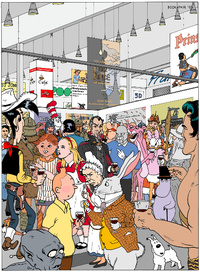
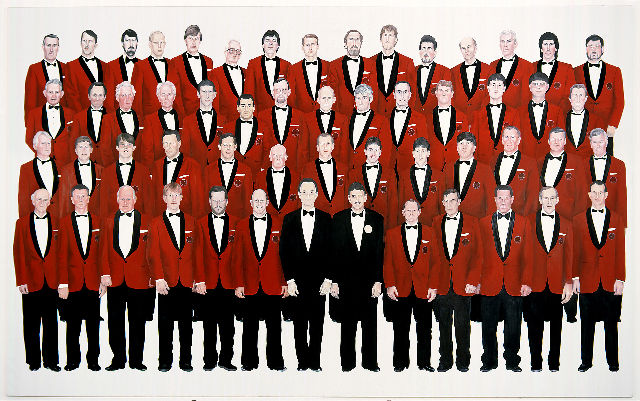

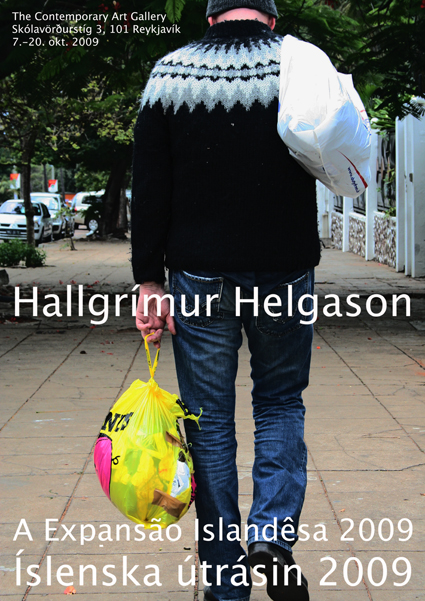
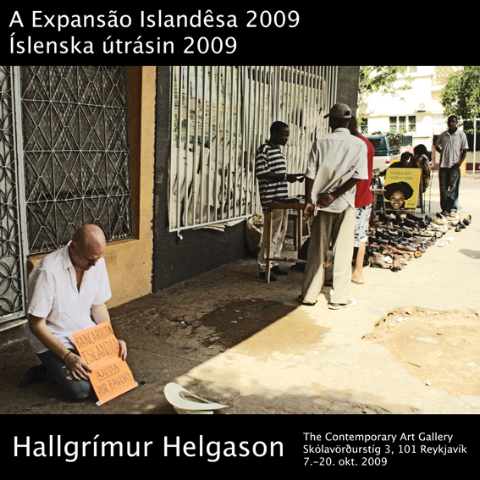
You've sometimes received the weirdest comments in reviews over the years: “The author's idea is good, but it is simply too long,” is the recurrent theme, it seems to me.
The novel Þetta er allt að koma/Things are Going Great was judged outstanding, but too long; Höfundur Íslands/The Author of Iceland just slightly too long, while Herra Alheimur/Mr. Universe was deemed to go rather a long way into space. In my view your strength as a writer is exactly that: to write without restraint; not answering the phone when the book's editor rings to suggest cuts; not answering e-mails. It is rather like criticising a painter for painting a picture that is too big – which you have actually done, too. Do you remember the picture of the Heimir male choir from north Iceland, which was displayed in the art gallery of the Sævar Karl menswear store: and every last one of them in his best suit?
Yes, it can be a bit difficult to stop once you've set off. But those criticisms you mention have been heard mainly in Iceland. It's a small country, of course, which sometimes has difficulty swallowing a big bite. That doesn't mean you shouldn't think big. But sometimes it gets too much even for me, for instance when I allocated myself four weeks to paint that choir, at the very time that I was in the middle of writing The Author of Iceland. I had to do 60 portraits in 30 days. Of course in the end some of them finished up with ‘Monday faces.' But I gave some thought to the criticism that my books were too long, and I wanted to be guided by it. And I finally managed to write a book that was under 300 pages (10 ráð til að hætta að drepa fólk og byrja að vaska upp/The Hitman's Guide to House Cleaning), and then they complained it was too short... So you can't win. Now I'm working towards another doorstep tome… It remains to be seen how it will be received.
A final word: Germany and Iceland. Iceland is Guest of Honour at the Frankfurt Book Fair next year. Probably not a huge event in global terms, but still: there we will be, with solid achievements, not flimsy credit instruments. From 13th-century saga manuscripts to 20th-century authors Laxness and Gunnar Gunnarsson, and then on into a new century and our own day. Won't it be a fine showcase per se, if we can leave out the Lady of the Mountains, unspoiled Iceland, the purest water and the prettiest women?
Yes indeed. I think it's a fine opportunity to demonstrate that Icelandic paper is in some cases not completely worthless.
